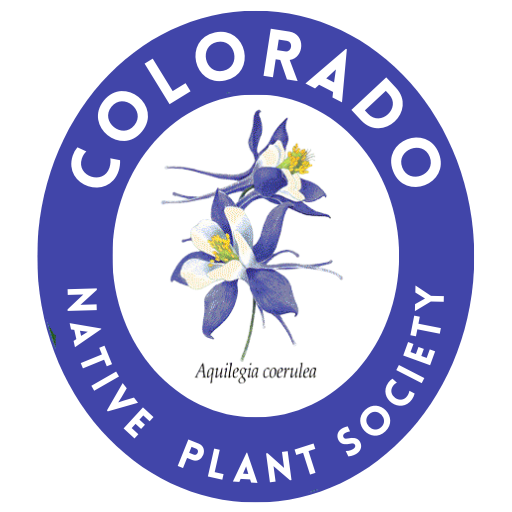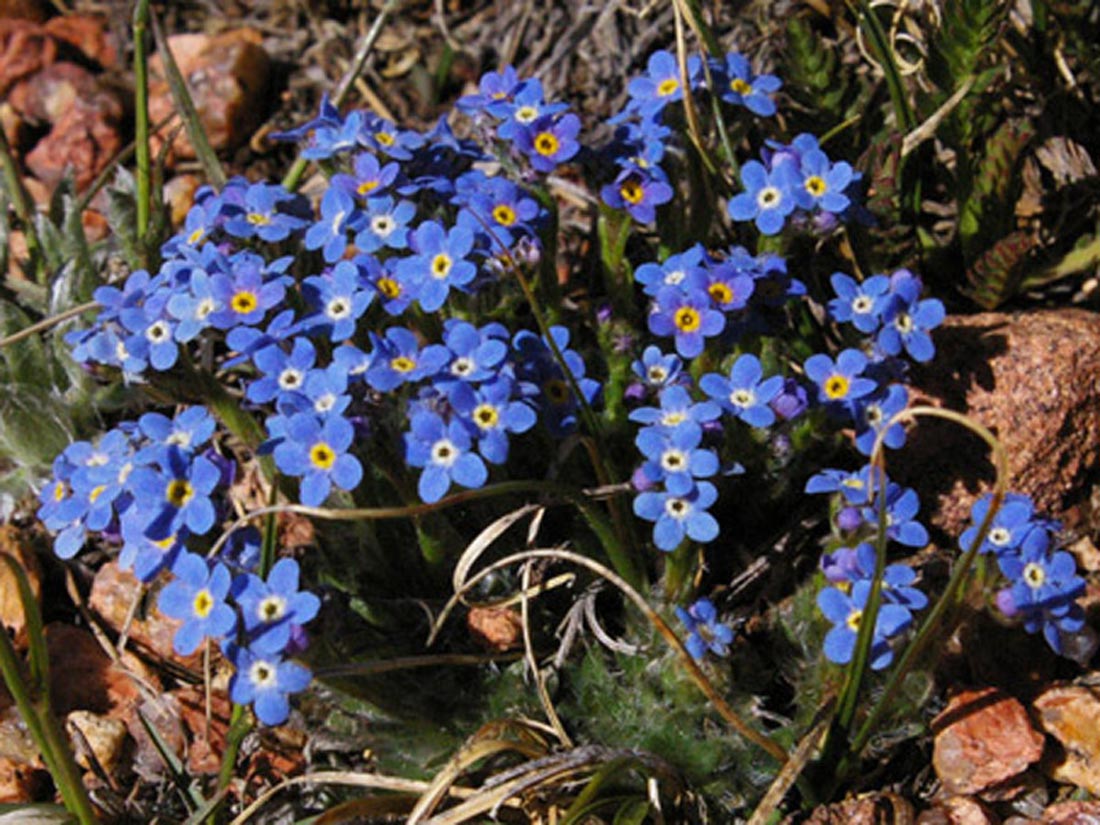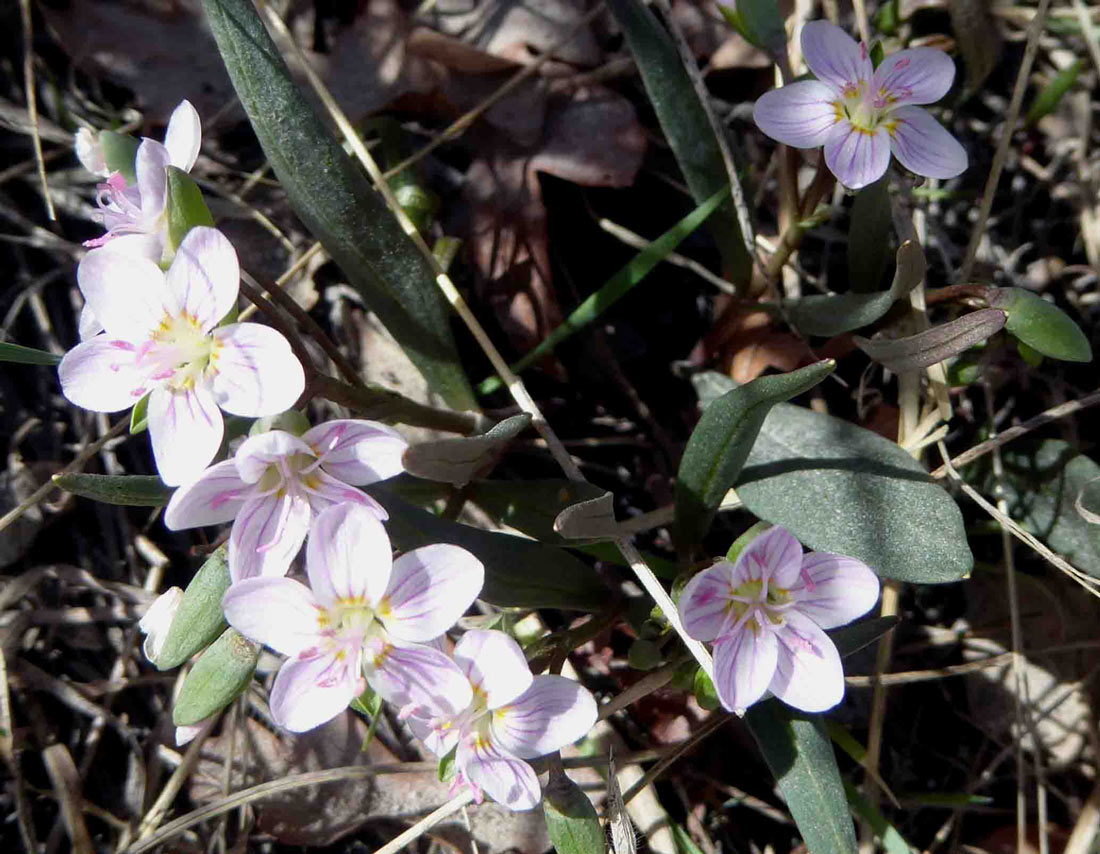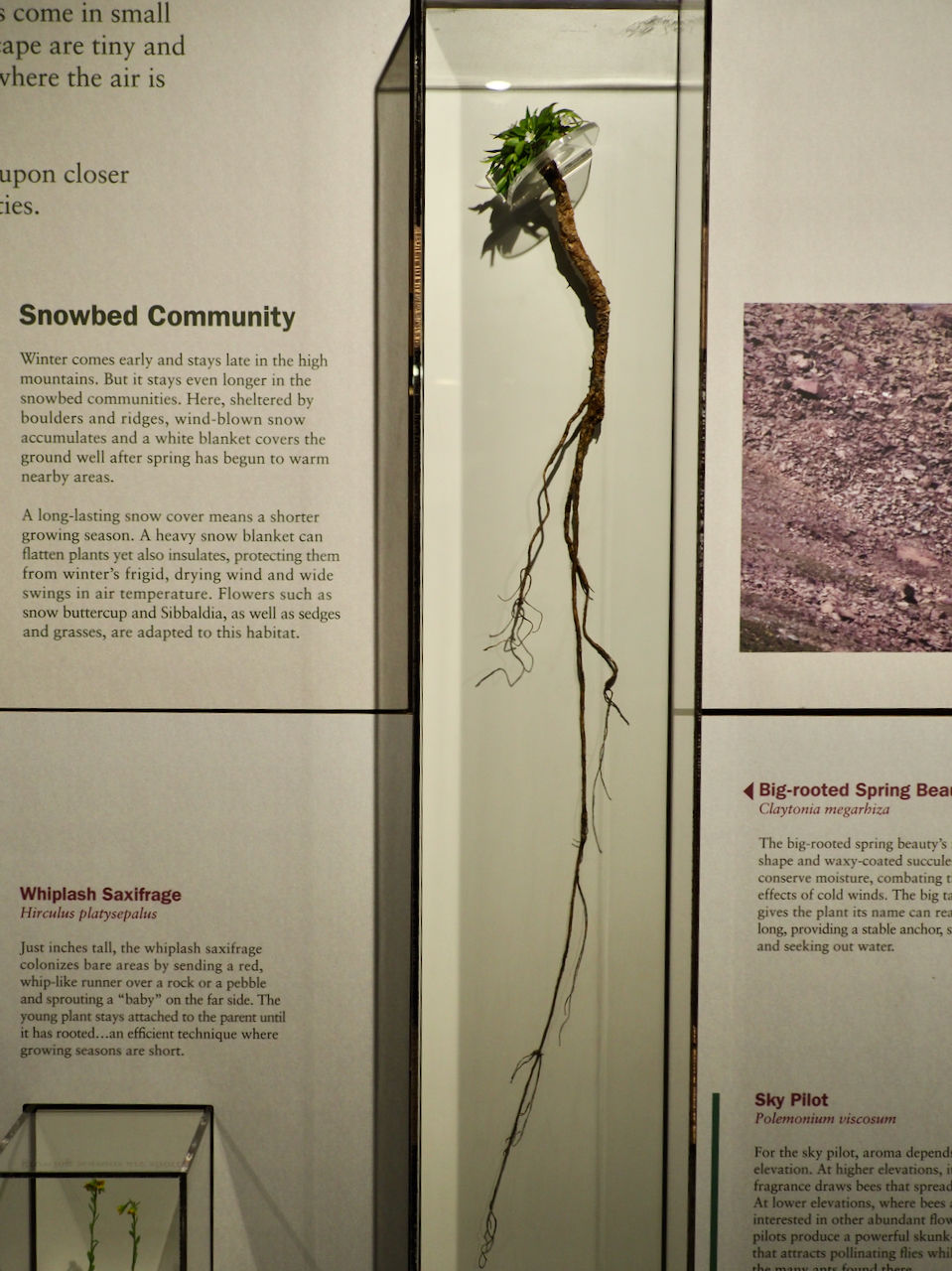When the lowlands are sweltering, savvy Coloradans make tracks to the Alpine Sublime. Up in the higher elevations they find relief from the heat and also revel in a stunning display of wildflowers that are only found on the lofty peaks. Frigid temperatures, heavy snowfall, rocky soil, and wild winds make the alpine an especially challenging place for plants, in fact trees cannot tolerate it, but many resourseful native plants have found amazing ways to beat the weather and thrive in spite of it.
Rocks make a preferred site in the alpine, giving shelter here to a paintbrush, Castilleja occidentalis.
A special flower found in the alpine – Arctic Alpine Forget-Me-Not (Eritrichium nanum). Warming anthocyanins so prevelant in the flowers give them their deep color. And they’re sweetly fragrant, too. Photo by Mo Ewing
The alpine zone in Colorado starts at 11,500 feet, some of our most rare and beautiful native wildflowers are found there. But the alpine is not just one thing, it is a jigsaw puzzle of many different plant communities each adapted to a specific location. In the alpine you come across rocky fell fields swept clear of snow by fierce winds, dry turf with somewhat deeper soil, steep scree slopes covered in loose fragments of rock and stone, and many other landforms. Read more about the different alpine communities and see galleries of native plant photos on our alpine page: Alpine Plants and Habitats
Many plants in the alpine are known as cushion plants. By staying low to the ground and keeping a densely-packed leaf and stem arrangement, they minimize the effect of the cold, drying winds. Temperatures on the interior of a cushion plant can be as much as 15 degrees warmer than the ambient temperature. Deep tap roots help anchor the plants and also give them access to scarce water resources.
Claytonia megarhiza, Alpine spring beauty, grows thick, succulent leaves to help protect it. Almost always found in rock crevices. Photo by Kelly Ambler
One of the first to bloom in spring, Alpine spring beauty really lives up to its name. It seems almost impossible for such a rugged environment to produce such a delicate flower.
Photo by Mo Ewing
The photo on the left shows a real Claytonia megarhiza root, all six feet of it, on display in the excellent exhibition found in the Alpine Visitor’s Center up in Rocky Mountain National Park. Megarhiza means ‘big root,’ and Big Rooted Spring Beauty is another common name for this native plant. Many of the alpine plants have roots equally deep.
Not everyone can hike up to the Colorado alpine zone, but our Rocky Mountain Park’s Trail Ridge Road makes a visit to the alpine possible for many people. With stuning views on the way up and short, paved trails right into the tundra at the top, it is a trip well worth making. Guests to our house, not of the plant-lover variety, have been not only thrilled with the sights up there, but also highly engaged with learning about the unique setting.
It takes many hundred of years to form an inch of tundra. From a distance, tunda surrounding the Alpine Visitor Center looks almost barren and boringly uniform.
Closer inspection reveals exquisite, tiny flowers like Phlox condensata, dwarf phlox, another sweetly scented native.
Yes, you have to get down on your knees . . .
Moss Campion, Silene acaulis, a good example of a cushion plant, protects the flower buds deep within its glossy leaves until they are ready to pop open. Native bees, moths, and hummingbirds are pollinators.
Hymenoxys grandiflora, Old Man of the Mountain, keeps its flower heads pointed to the east. This native needs from 10 to 15 years to reach flowering stage. It blooms once, then dies.
It’s not unusual to see one of these yellow-bellied marmots out for a snack at one of the stops near the Alpine Visitors Center. It’s the native plants that keep our ecosystems alive!
Double score! Wapiti herd and silky phacelia, Phacelia sericea, the color is almost unbelieveable. Also seen on road up to the Alpine Visitor’s Center.
Any visit to the alpine whether by foot or car takes effort and planning, but the rewards are abundant. In Colorado the frost free season up there is only about six weeks, from July to the middle of August, and that is prime wildflower-viewing time. But the vistas, the rock formations, the clouds – beautiful anytime of year. If you are planning a trip to Rocky, timed entry reservations are needed late May through mid October, and of course Trail Ridge Road closes as soon as snow removal becomes impossible – usually sometime in October. Insider tip – each night at 7 pm. if you have your fingers on the keyboard, about 125 reservations will open for the following day. And on any day, you can enter the park without a reservation after two o’clock. The ride up to Pikes Peak, either by car or on the cog railroad is another way to visit or get guests up to the alpine. It really is sublime.
All photos not otherwise credited are by the author~
Sue Dingwell
CoNPS Media Committee,
Co-Webmaster











